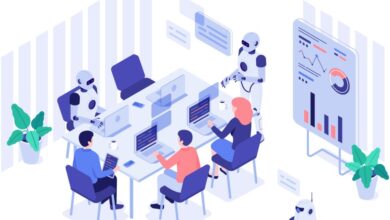5 reasons artificial intelligence makes farmers nervous

The emergence of artificial intelligence onto farms brings with it trepidation and concern for many growers — with good reason. If the scientists and agri-tech investors who are driving innovation at the highest levels are correct, AI is poised to indelibly change the way farmers do their work. Here are five of those concerns:
1. More education needed. One day, automated machines could fill labor shortages by taking over menial, repetitive tasks. But while AI could fill in for unfilled, unskilled labor positions, farmers will need to hire more skilled laborers to operate them, according to Arkansas farmer Travis Senter. The current education system isn’t set up to address these anticipated needs, and Senter says he hasn’t seen a plan to fix the problem.
“Today, we rely on a lot of manual labor. A lot of the guys who work for us are not educated,” Senter says. “As technology changes, we’re going to be relying on people who have a broad scope of knowledge [about technology]. That is something that our education system today is not set up for. Labor is one of the biggest issues I see. I don’t know that AI is going to necessarily fix that. I think it will change the labor we require.”
2. Lack of connectivity. New farm machines require connectivity, which is an issue in some rural areas.
“The problem is that we’re so remote,” says Lacey Vardeman, a fifth-generation Texas rancher and owner of Cotter Key Farms.
According to a recent report by the Federal Communications Commission, 22% of rural American households and 27% of those living on Tribal land don’t have broadband coverage. This statistic doesn’t include the vast swaths of uninhabited farmland that farmers work.
3. Change driven by outsiders. Artificial intelligence was incubated in the technology sector, which is many miles from rural farms in both culture and distance. Because of that, many AI-related solutions are now being introduced to farmers by those with little experience in agriculture.
Over the last decade, Robert Strong, a Texas A&M University professor in agricultural leadership, communication and education, says he’s seen private universities that haven’t historically been associated with agriculture suddenly pitch themselves as agri-tech thought leaders.
“We’re talking about Oxford and Stanford,” he says. “We’re now competing with all of them. From a land-grant lens and even a regional institutional lens, I think we need to step up our game because there are others who bring a lot of institutional, human capital to this conversation.”
4. Data protection. Every time a modern tractor or combine starts up, its GPS begins mapping, and data begins flowing from integrated telematic systems.
“We have tons of data,” says Kelly Whatley, owner of J&K Whatley Farms near Corpus Christi, Texas. “It can be twisted. I don’t think any of us want to see our data come back and harm us or harm our farms.”
Bob Walker, a western Tennessee farmer, offers this advice to technology businesses: “If I don’t have a good feeling about something, it isn’t going any further. You have to follow a high ethical and moral standard. Don’t fudge the data,” he says. “Never, ever, lie to me or another farmer. If you lie to me, we’re done. That is going to get you run out of town faster than you came in. And don’t use that data for anything other than exactly what was agreed upon.”
5. Investment cost and risk. Precision ag technology has already changed agriculture’s current and future landscape. But farmers must pay a premium to get in the door. And given the amount of new products that are flooding the marketplace, return on investment is not always clearly understood.
“Sometimes you take a chance and spend thousands of dollars on a piece of equipment, and it might not do what you expect it to do,” says Todd Straley, a grower from the Plainview, Texas, and CEO of the Quarterway Cotton Growers gin. “You’ve gotta be really selective.”
Whatley agrees: “Sometimes the cost just does not outweigh the benefit. We need to see concrete proof [of ROI] before we’re willing to buy that technology.”
Listen to Texas A&M’s Robert Strong talk about artificial intelligence:



